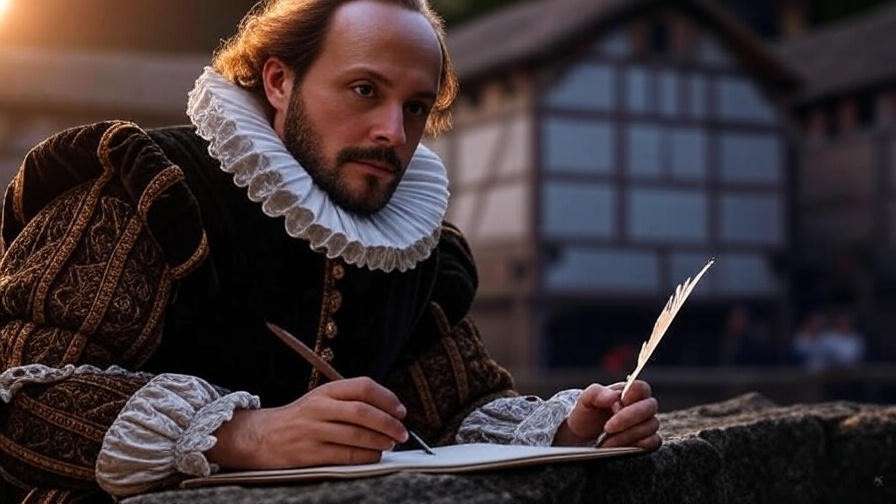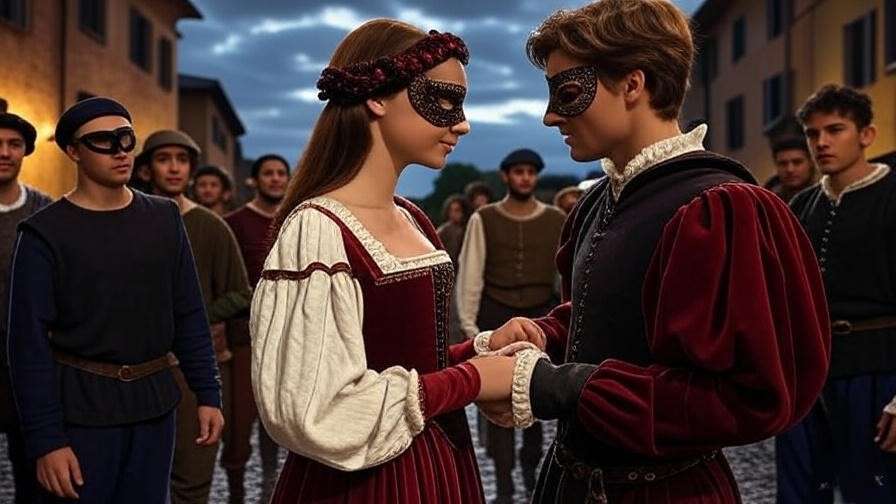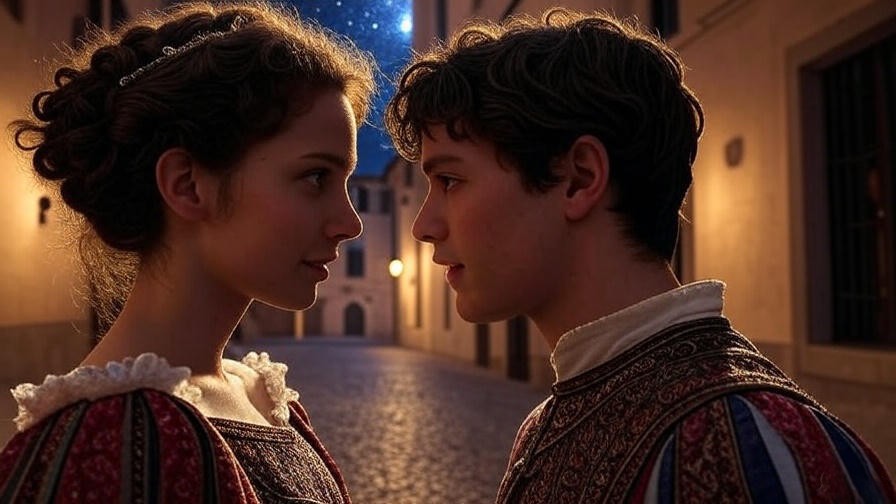Picture yourself sketching the face of William Shakespeare, capturing his enigmatic gaze and Elizabethan flair with every stroke of your pencil. Whether you’re an artist, a literature enthusiast, or a teacher, learning to draw Shakespeare is a rewarding way to connect with the Bard’s timeless legacy. This guide will teach you how to create authentic, inspired portraits of Shakespeare, blending historical accuracy with artistic creativity. As an art historian and Shakespeare scholar, I’ve drawn on insights from institutions like the Folger Shakespeare Library to craft a step-by-step approach that’s accessible yet comprehensive. Expect practical tips, historical context, and creative ideas to make your Shakespeare sketch stand out.
In this article, you’ll discover why drawing Shakespeare matters, how to research his appearance, the best tools and techniques for sketching, and ways to use your artwork in educational or theatrical settings. Whether you’re a beginner or a seasoned artist, this guide will help you bring the Bard to life on paper or screen.
Why Draw Shakespeare? The Intersection of Art and Literature
The Enduring Legacy of Shakespeare’s Image
William Shakespeare’s image is iconic, yet no definitive portrait exists from his lifetime. The Droeshout engraving, featured in the First Folio of 1623, and the Chandos portrait, housed at the National Portrait Gallery, are the most recognized depictions. These images shape how we visualize the Bard, with his high forehead, trimmed beard, and thoughtful expression. Drawing Shakespeare allows artists to engage with his cultural significance, bridging the gap between his 16th-century world and today’s creative landscape. By sketching him, you’re not just creating art—you’re interpreting history.
Benefits of Drawing Shakespeare for Artists and Educators
Sketching Shakespeare offers unique benefits. For artists, it’s a chance to hone portraiture skills while exploring Elizabethan aesthetics. For educators, it’s a powerful tool to make Shakespeare’s works more relatable. Imagine students sketching the Bard while discussing Hamlet—it sparks creativity and deepens engagement with his plays. Theater enthusiasts can use sketches for costume designs or posters, bringing a visual dimension to performances. This exercise fosters a deeper appreciation of Shakespeare’s era, making it ideal for classrooms, art studios, or personal projects.
Understanding Shakespeare’s Appearance: Historical Context
What Did Shakespeare Look Like?
No confirmed portrait of Shakespeare exists, but the Droeshout engraving and Chandos portrait provide the best clues. The Droeshout, created posthumously, shows a balding man with a mustache and goatee, while the Chandos portrait offers a more soulful depiction with darker features. The Cobbe portrait, another contender, suggests a wealthier, more refined Shakespeare. According to the National Portrait Gallery, these images are debated for authenticity, but they remain the foundation for artistic interpretations. When drawing Shakespeare, blend these references with your creative vision to capture his essence.
Elizabethan Fashion and Its Role in Sketches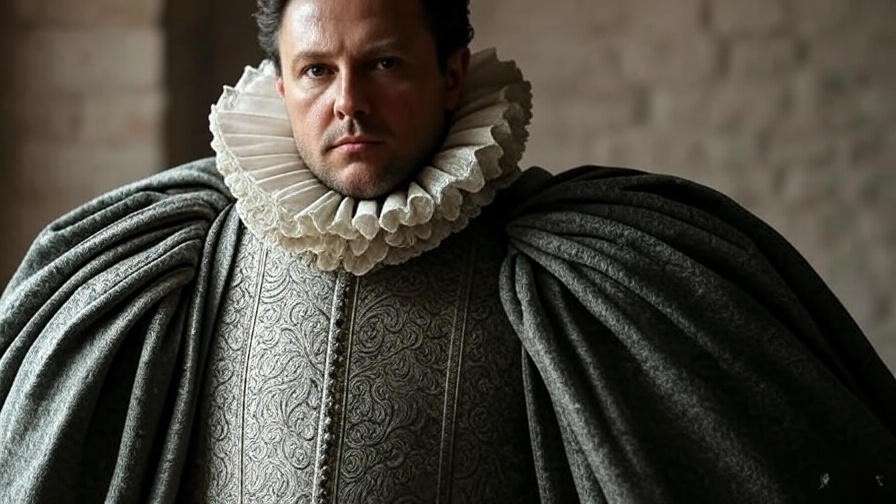
Shakespeare lived in the Elizabethan era, a time of elaborate fashion. Men wore doublets, ruffled collars, and cloaks, often adorned with intricate embroidery. To draw Shakespeare authentically, incorporate these elements. A ruffled collar, for instance, requires careful shading to show its layered texture. Study portraits from the period, like those of Queen Elizabeth I’s courtiers, to understand fabric folds and accessories. Adding a quill or book can tie your sketch to Shakespeare’s literary legacy, grounding it in historical context.
Tools and Materials for Drawing Shakespeare
Essential Art Supplies
To draw Shakespeare, you’ll need the right tools. For beginners, start with HB and 2B pencils for sketching and shading, an eraser for corrections, and quality sketch paper. Advanced artists might prefer charcoal for dramatic contrast or fine-tip pens for detailed line work. Digital artists can use tablets with apps like Procreate or Adobe Fresco. Budget-friendly options include Staedtler pencils or Wacom’s entry-level tablets. For eco-conscious artists, try recycled sketchbooks or sustainable brands like Faber-Castell.
Choosing the Right Medium
The medium you choose affects the mood of your Shakespeare portrait. Pencil sketches are versatile and forgiving, ideal for beginners. Charcoal adds depth and drama, perfect for capturing the intensity of Shakespeare’s tragedies. Ink drawings offer crisp lines for detailed Elizabethan clothing, while digital art allows for easy edits and vibrant effects. Each medium has trade-offs: pencils lack the boldness of charcoal, while digital tools require software familiarity. Experiment to find what suits your style and skill level.
Step-by-Step Guide to Drawing Shakespeare
Step 1: Research and Reference Images
Start by gathering reliable references. The Droeshout engraving and Chandos portrait, available through the Folger Shakespeare Library’s digital archives, are excellent starting points. Compare these images to note consistent features: a high forehead, receding hairline, and short beard. Avoid modern interpretations that stray from historical accuracy. Save or print your references to keep them handy while sketching, and consider blending elements from multiple portraits for a unique yet authentic depiction.
Step 2: Sketching the Basic Structure
Begin with a light pencil sketch to map out Shakespeare’s head and shoulders. Use an oval for the head, noting his high forehead and slightly elongated face. Divide the face into thirds: the top third for the forehead, the middle for the eyes and nose, and the bottom for the mouth and chin. Draw guidelines to place features accurately. This step ensures proportional accuracy, a common challenge in portraiture. Keep lines light so you can refine them later.
Step 3: Adding Facial Features
Focus on Shakespeare’s iconic features. Sketch his eyes with a contemplative expression, reflecting his introspective genius. Add a straight nose, a small mustache, and a goatee, using short, controlled strokes for hair texture. His balding head should show a receding hairline with sparse hair at the crown. Study the Chandos portrait for inspiration on his soulful gaze. Use an eraser to refine shapes, ensuring the features feel cohesive and lifelike.
Step 4: Incorporating Elizabethan Attire
Now, dress Shakespeare in period clothing. Sketch a doublet with puffed sleeves and a fitted waist, adding buttons or lacing for detail. The ruffled collar is key—draw overlapping layers with soft curves to mimic fabric. Add a cloak draped over one shoulder for elegance. Use reference images of Elizabethan portraits to get the proportions right. For texture, lightly sketch folds and creases, especially around the collar and sleeves.
Step 5: Shading and Detailing
Shading brings your sketch to life. Use cross-hatching or stippling to add depth to the face, focusing on areas like the cheekbones and under the eyes. Shade the collar and doublet to show fabric texture, with darker tones for folds and lighter ones for highlights. Charcoal users can smudge for soft transitions, while digital artists can use gradient brushes. Pay attention to light sources—imagine a soft glow from one side to create a theatrical effect.
Step 6: Final Touches and Stylistic Choices
Add finishing touches to tie your sketch to Shakespeare’s legacy. Include a quill, a book, or a Globe Theatre silhouette in the background for context. Consider adding a subtle quote, like “To be or not to be,” in elegant script. For a creative twist, incorporate symbols from his plays—a dagger for Macbeth or a crown for King Lear. Review your sketch for balance, erasing stray lines and enhancing key details for a polished result.
Common Mistakes to Avoid When Drawing Shakespeare
Historical Inaccuracies
One of the most common pitfalls when drawing Shakespeare is straying from historical accuracy. Modernizing his attire—think jeans or a t-shirt—can disconnect the sketch from its Elizabethan roots. Similarly, exaggerating facial features without reference to authentic portraits like the Droeshout or Chandos can lead to an unrecognizable figure. To avoid this, cross-reference your sketch with reliable sources, such as the National Portrait Gallery’s collection. Double-check details like the shape of the ruffled collar or the style of his doublet to ensure they align with 16th-century fashion.
Overcomplicating the Sketch
Beginners often overcomplicate their drawings by adding excessive details too early. For example, diving into intricate shading before nailing the basic proportions can result in a cluttered or unbalanced portrait. Focus on mastering the foundational structure—head shape, facial features, and clothing outlines—before adding textures or backgrounds. If you’re struggling, step back and simplify: a clean, accurate sketch of Shakespeare’s face and attire is more effective than an overly detailed but disproportionate one. As art historian John Berger once noted, “Simplicity in portraiture reveals the subject’s essence.”
Creative Variations: Stylizing Your Shakespeare Sketch
Modern vs. Historical Styles
While historical accuracy is key, there’s room to experiment with modern art styles. A minimalist Shakespeare with clean lines and bold colors can appeal to contemporary audiences, while a cartoon-style portrait might engage younger students. For a dramatic flair, try a chiaroscuro approach, using stark contrasts to evoke the mood of Othello or Macbeth. Pop culture examples, like graphic novel depictions of Shakespeare, show how versatile his image can be. Balance creativity with recognizable features to ensure your sketch still feels like the Bard.
Thematic Sketches Inspired by Shakespeare’s Works
Tying your sketch to a specific play can add depth. For Hamlet, draw Shakespeare with a somber expression, holding a skull. For A Midsummer Night’s Dream, incorporate whimsical elements like fairy wings or a forest background. Symbols like roses (Romeo and Juliet), crowns (King Lear), or daggers (Macbeth) can subtly nod to his works. These thematic choices make your sketch more engaging and spark conversations about Shakespeare’s stories. For inspiration, look at how artists like John Singer Sargent used symbolism in historical portraits.
Case Study: Reimagining Shakespeare in Modern Art
Consider the work of contemporary artist Kehinde Wiley, known for reimagining historical figures in vibrant, modern styles. While Wiley hasn’t specifically drawn Shakespeare, his approach—blending classical portraiture with bold, urban aesthetics—offers a model. A Shakespeare sketch in Wiley’s style might feature the Bard in a doublet against a vivid, patterned background, merging Elizabethan and modern elements. This case study shows how artists can honor Shakespeare’s legacy while pushing creative boundaries, making your work stand out on platforms like Instagram or DeviantArt.
Using Your Shakespeare Sketch: Practical Applications
For Educators and Students
Drawing Shakespeare is a fantastic classroom activity. Teachers can pair sketching with discussions of his plays, helping students visualize the era. For example, a lesson on Romeo and Juliet could include sketching Shakespeare in a romantic pose, sparking debates about his characters’ motivations. This hands-on approach engages visual learners and makes literature interactive. Create a classroom activity where students draw Shakespeare based on a specific play, then share their work in a gallery-style discussion. The Folger Shakespeare Library offers resources for integrating art into Shakespeare studies.
For Theater and Performance
Sketches of Shakespeare can enhance theatrical productions. Use your portrait for posters, programs, or social media promotions for a local Tempest or Twelfth Night performance. Costume designers can reference your sketch to recreate Elizabethan attire accurately. Collaborate with theater groups by offering your artwork for set design inspiration, such as a backdrop featuring Shakespeare’s silhouette. These applications not only showcase your skills but also deepen the audience’s connection to the Bard’s world.
For Personal and Professional Portfolios
Artists can use Shakespeare sketches to demonstrate versatility in their portfolios. A well-executed portrait shows your ability to blend historical research with creative expression, appealing to clients in publishing, education, or theater. Share your sketch on platforms like Behance or Pinterest, using hashtags like #ShakespeareArt or #DrawTheBard to attract attention. A strong portfolio piece could lead to commissions, such as illustrating a book cover for a Shakespeare anthology or designing merchandise for a literary festival.
Expert Tips for Elevating Your Shakespeare Sketch
Mastering Light and Shadow
To give your sketch a theatrical flair, master light and shadow. Use a single light source—imagine a candlelit stage—to create dramatic contrasts. Highlight the cheekbones and forehead with soft gradients, leaving darker shadows under the eyes and chin to suggest depth. Charcoal or digital brushes with low opacity work well for this. Study Rembrandt’s portraits for inspiration; his use of light captures the introspective mood perfect for Shakespeare’s contemplative nature.
Capturing Emotion and Personality
Shakespeare’s genius lay in his ability to convey human emotion, so your sketch should reflect this. Aim for a thoughtful or witty expression—perhaps a slight smile for his comedies or a furrowed brow for his tragedies. Subtle details, like the angle of the eyes or the curve of the mouth, can convey personality. Practice sketching different expressions to find one that resonates. As portrait artist Norman Rockwell advised, “The eyes are the window to the soul—use them to tell a story.”
Digital Art Enhancements
For digital artists, tools like Procreate or Adobe Fresco offer endless possibilities. Use textured brushes to mimic parchment or oil painting effects, giving your sketch a historical feel. Add subtle color washes—muted golds or greens—to evoke the Elizabethan palette. Experiment with layers to test backgrounds, like a Globe Theatre sketch or a starry night for A Midsummer Night’s Dream. Save your work in high-resolution formats for professional use, such as prints or online galleries.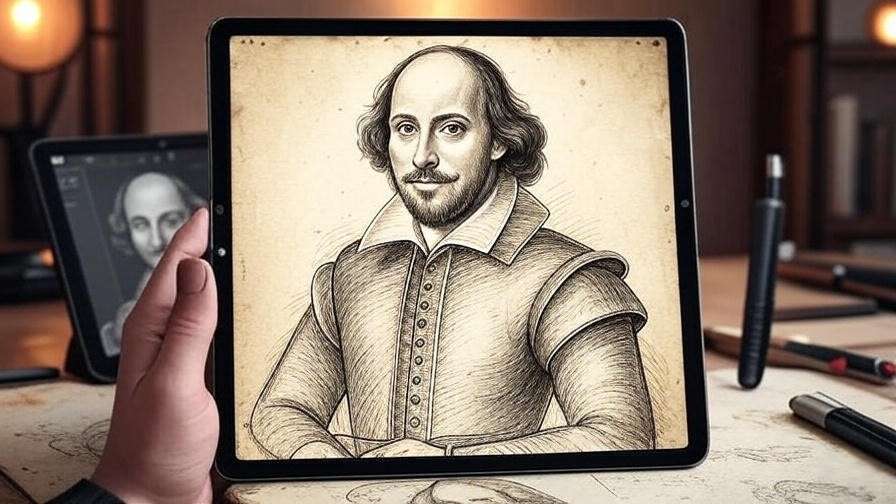
FAQs About Drawing Shakespeare
What’s the Best Reference Image for Drawing Shakespeare?
The Droeshout engraving and Chandos portrait, available through the National Portrait Gallery and Folger Shakespeare Library, are the most reliable references. The Droeshout offers a clear, iconic outline, while the Chandos provides a more expressive, soulful look. Combine elements from both for a balanced depiction, ensuring historical fidelity.
Do I Need to Be an Expert Artist to Draw Shakespeare?
No expertise is required! This guide is designed for all skill levels, with step-by-step instructions to help beginners. Focus on basic shapes and proportions, and practice regularly. Even simple sketches can capture Shakespeare’s essence with the right references and techniques.
How Can I Make My Shakespeare Sketch Stand Out?
Incorporate thematic elements from his plays, like a quill for his writing or a crown for his histories. Experiment with modern styles, such as minimalist or abstract, while keeping recognizable features. Adding a subtle quote or symbol can make your sketch memorable and shareable.
Are There Copyright Issues with Drawing Shakespeare’s Portraits?
Historical images like the Droeshout and Chandos portraits are in the public domain, so you’re free to use them as references. However, avoid copying modern artists’ interpretations directly. Create an original sketch to ensure your work is legally and ethically sound.
Conclusion
Drawing Shakespeare is more than an artistic exercise—it’s a journey into the heart of his literary and cultural legacy. By following this guide, you’ve learned to research his appearance, select the right tools, and create a portrait that blends historical accuracy with creative flair. Whether you’re sketching for a classroom, a theater production, or your portfolio, your artwork can bring the Bard to life in new ways. Grab your pencil, tablet, or charcoal, and start sketching today. Share your creation with #DrawTheBard to join a community of Shakespeare-inspired artists. As the Bard himself wrote, “All the world’s a stage”—let your sketch be his spotlight.

